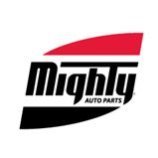-
Welcome to Auto Parts Forum
Whether you are a veteran automotive parts guru or just someone looking for some quick auto parts advice, register today and start a new topic in our forum. Registration is free and you can even sign up with social network platforms such as Facebook, X, and LinkedIn.
FLUID LEVELS AND SERVICE INTERVALS: LOW FLUID LEVEL CAUSES POWER TRANSFER UNIT FAILURE
-
Similar Topics
-
By GreenGears Auto Limited
In the fast-paced world of automobiles, the allure of shiny new parts is undeniable. But amidst the gleaming chrome and cutting-edge technology, a sustainable revolution is quietly gaining momentum - the used car parts market. It's a world where eco-consciousness meets affordability, and Green Gears Auto Limited is leading the charge.
Used Car Parts: The Unsung Heroes of Automotive Sustainability
Let's face it, manufacturing new car parts takes a toll on our planet. From the extraction of raw materials to the energy-intensive production processes, the environmental impact is significant.
Used car parts offer a brilliant solution - they give a second life to perfectly functional components, reducing the need for new production and minimizing waste. It's not just about the environment though. Used auto parts, often Original Equipment Manufacturer (OEM) parts, offer significant cost savings compared to their brand-new counterparts. This means that keeping your car on the road doesn't have to break the bank.
Green Gears Auto Limited: Your One-Stop Shop for Sustainable Solutions
Enter Green Gears Auto Limited, a company dedicated to making sustainable car part solutions accessible to all. Their extensive inventory includes a wide range of used car parts, from engines and transmissions to body panels and electrical components. They even specialize in hard-to-find parts, ensuring that even owners of older or less common vehicles can find what they need.
Whether you're a DIY enthusiast, a professional mechanic, or simply a car owner looking for affordable and eco-friendly solutions, Green Gears Auto Limited has you covered. They offer:
Quality Assurance: All parts are thoroughly inspected to ensure they meet high standards of quality and functionality. Wide Selection: Their inventory covers a broad spectrum of makes and models, making it easy to find the right part for your vehicle. Expert Support: Their knowledgeable team is always ready to assist you in finding the perfect part and answering any questions you may have. Embrace the Green Revolution
The automotive industry is evolving, and sustainability is at the forefront of this transformation. Choosing used car parts isn't just a smart financial decision; it's a conscious choice to reduce your environmental footprint.
So, the next time your car needs a little TLC, consider the sustainable option. Visit
link hidden, please login to view and discover a world of affordable, eco-friendly car parts. Together, let's keep our cars running smoothly and our planet healthy. Remember, every used part is a step towards a greener future.
-
By Counterman
link hidden, please login to view announced the acquisition of Rowe Auto Service, marking the company’s third acquisition since the Berrodin Parts Warehouse affiliation in October 2023, and is in addition to 32 greenfield locations opened year-to-date in 2024 and 30 locations opened in 2023. link hidden, please login to viewalso announced that the recently purchased 217,000 sq. ft. distribution center in Chicopee, Massachusetts, is expected to open in March 2025. Rowe Auto Service in Oneonta, NY, has been owned and operated by the Odell and Hogan families for nearly 60 years. It was purchased by Howard J. Odell and Joseph R. Hogan in June 1964 from the original Rowe brothers. Their sons Lance E. Odell and Joseph D. Hogan worked in the business and, in June 1995, purchased the company from their fathers. They will stay on with Fisher Auto Parts beyond the transition.
“As a family-owned, privately held business with an experienced team of professionals, Rowe Auto Service is a good fit for Fisher Auto Parts,” said Geoffrey Shifflett, area vice president of Fisher Auto Parts. “We plan to grow market share in this region, so we are very pleased that Lance and Joe agreed to pass the torch to us, and we thank them for staying on to help with the transition.”
The post
link hidden, please login to view appeared first on link hidden, please login to view.
link hidden, please login to view -
By Counterman
The National Institute for Automotive Service Excellence (ASE) said more than 8,400 automotive service professionals participated in its gasoline engine survey. ASE has been commissioned to conduct a series of studies to identify and understand which repair tasks automotive service technicians perform most frequently.
The initial survey focused on gasoline engine repair tasks and showed that 57% of those who completed the survey are currently A1 certified or were in the past, and 76% hold one or more ASE A2-A8 automotive certifications. A majority of those respondents hold each of those respective certifications.
Regarding training, technicians receive training from a variety of sources including on the job (79%), OEM training (69%), college (57%), high school (53%) and aftermarket (47%). Among those who completed the survey, 82% said they have 10 or more years of experience and 57 percent said ASE certifications factored into their pay plans.
As a thank you to those who participated in the survey, five automotive service professionals were randomly selected to be awarded Snap-on gift cards. The winners are Andrew Cronin Sr., David Kaplanis, Jeramy Peterson, David Phillips and Calen Sober-Throop.
The post
link hidden, please login to view appeared first on link hidden, please login to view.
link hidden, please login to view
-





Recommended Posts
Join the conversation
You can post now and register later. If you have an account, sign in now to post with your account.
Note: Your post will require moderator approval before it will be visible.